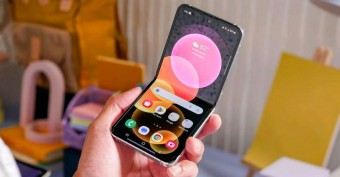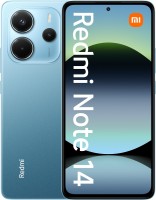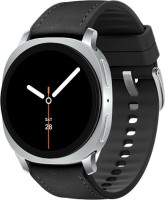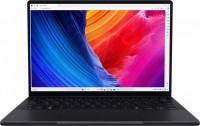Sapphire Glass vs. Gorilla Glass: Pros and Cons
We independently test the products and technologies that we recommend.

In this article, we will take a closer look at both types of protective coatings, as well as deal with their advantages and disadvantages.
Sapphire and Gorilla Glass: what is it and what is it eaten with
 |
Sapphire is a transparent crystal that looks like ordinary glass, but unlike glass, it is difficult to leave a scratch or crack on it. And all because it is one of the strongest materials, which is much closer to diamond in terms of physical and chemical properties. This is a synthetic substance that was first created in 1904 by the French chemist Auguste Verneuil. Since then, sapphire has been actively used to protect expensive medical equipment, smartwatches and sometimes smartphones. Basically, these are some episodic models like HTC U Ultra or some Vertu models.
Sapphire crystals are expensive and harder to produce, so for the first iPhone, Steve Jobs decided to find an alternative and in 2006 asked Corning to revive the long-forgotten Project Muscle project. So the protective glass Gorilla Glass was born, which has increased resistance to scratches, bending and impact. If you do not go into the details of the technological process, then this is quite an ordinary glass, which is subjected to a complex chemical process of ion exchange of potassium and sodium. The fact is that potassium ions are 2.25 times larger than sodium ions, and when a replacement occurs, large ions deform and stretch the crystal lattice, creating pressure. That is, the glass becomes, as it were, compressed from the inside. It is this property that makes it incredibly durable. If you have 5 free minutes, then watch an interesting report from the Corning factory.
Today, Gorilla Glass is used primarily in the creation of smartphones, smartwatches and other gadgets that need display protection. Increasingly, such glasses can be found, for example, in laptops. Interested parties were also found in the automotive industry. So for the second generation Ford GT, experts from Corning made a special automotive glass, which was a hybrid three-layer Gorilla Glass. The engineers of the automotive giant liked it so much that they used it not only as a windscreen, but also as a transparent partition separating the engine compartment from the passenger compartment.
Six versions of Gorilla Glass have already been released, of which only the fifth and sixth can be called relevant. The fifth generation was designed with even greater drop resistance in mind, and according to Corning, it "survives" even when dropped from up to 1.6 meters. At the same time, the manufacturer claims that in 80% of cases of a severe fall from a meter height, it also remains safe and sound. In the sixth version, the durability of the glass has increased. After reading opinion polls, Corning experts have developed a completely new material that can withstand an average of 15 drops from a meter height. This is twice as high as Gorilla Glass 5.
Sapphire and Gorilla Glass anti-scratch
 |
Sapphire is one of the most complex minerals on earth. It is harder than steel, but more brittle than diamond. Chemically strengthened glass may be a superior material, but sapphire is superior in terms of hardness, strength, and durability. On the Mohs scale (mineralogical scale of hardness of materials), he gets 9 points. Gorilla Glass has 6.8 points.
- Talc - 1 point
- Gypsum - 2 points
- Gold - 2.8 points
- Steel - 4 points
- Ordinary glass - 5 points
- Gorilla Glass - 6.8 points
- Topas - 8 points
- Sapphire - 9 points
- Diamond - 10 points
Considering that a harder material scratches a soft one without problems (sapphire can only be scratched by a diamond), Gorilla Glass does not resist scratches as well, but is a little afraid. And then you will be surprised. Studies have shown that the main cause of scratches is the most common sand, which has a 7 on the Mohs scale. For example, if there are a few grains of sand in the keyhole and they remain on the key, then the key will most likely scratch the glass.
Sapphire and Gorilla Glass against bumps, drops and bending
 |
With the development of technology, the market demanded to reduce the thickness of the glass so that smartphones become thinner and the picture feels like it is right on the surface of the screen. As a result, the thickness of Gorilla Glass was reduced to 0.4 mm, but manufacturers began to use curved glass at the edges, which became even easier to break than flat glass. All this led Corning to focus on improving the drop resistance of glass, while ignoring scratch resistance. All the same, scratched glass is not such a problem as a broken display.
And you can kick for this only the smartphone manufacturers themselves, who want thinner and thinner. And it is even better that the protective glass is not only in front, but also used instead of the back cover. Yes, yes, we can’t live without wireless chargers, let’s have more breakable glass covers. As Corning vice president John Bain said, it is impossible to improve both characteristics at the same time. But if smartphone manufacturers agreed to increase the thickness of their devices by 1 mm by installing Gorilla Glass of the appropriate thickness, the smartphone screen would be almost impossible to break. As a result, the fifth generation in this regard was even better. Below are photos of different versions of glass that survived a funny stress test: smartphones were thrown into a bag with keys, coins, glasses, cosmetics and other small things, and then shaken for 45 minutes.
 |
Sapphire has the opposite situation, as we already understood, it can only be scratched with an elven artifact, but it categorically does not like to fall to the ground. The fact is that Gorilla Glass is a very flexible material that can withstand serious pressure and is more likely to scratch than crack. Sapphire loses a lot in terms of flexibility, so when pressure is applied to the device, it can crack without any problems. Also, the strength of sapphire leaves much to be desired - it is very fragile and can be easily damaged upon impact. That is why Vertu phones have a thick sapphire crystal that would never be put on an iPhone.
Conclusion
 |
As you can see, on paper, sapphire glass looks more interesting, but in reality, none of the options is 100% protected. Gorilla Glass is more flexible, harder to break, and cheaper ($3 per sheet versus $30 for a sapphire sheet), so it's most commonly used in smartphones. Sapphire coating is much more expensive and not as flexible, but it is almost impossible to scratch, so its use is more appropriate in conditional smartwatches, which you are unlikely to drop, but you can accidentally scratch anywhere. The only question is the price, sapphire, as we know, is much more expensive than glass, so it is used in rather expensive models, mainly manufactured by Apple, Garmin and sometimes Lenovo. Gorilla Glass is more often used in inexpensive smartwatches, less often found in models for $600-800 like Garmin Forerunner 945 Price from 23 813 up to 25 115 ₴.
Articles, reviews, useful tips
All materials


























































































